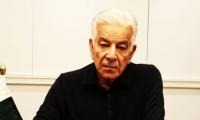Of the 193 member-states of the UN, India from within is one of the most violent states. Of the 193 member-states of the UN, India from within is one of the most divided states. Figures don’t lie. According to the South Asia Terrorism Portal (satp.org), there have been 65,980 terrorist-related fatalities in India between 1994 and 2017..
Terrorism in India is of three distinct forms: religious, secessionist (forces that favour a formal withdrawal from the Union) and ethnic. Religious terrorism takes at least four forms: Hindu-Muslim, Hindu-Sikh, Hindu-Christian and Hindu-Intercaste. Secessionist or separatist terrorism is active in at least seven states: Assam, Meghalaya, Mizoram, Manipur, Nagaland, Punjab and Tripura. In Assam, ethnic terrorism takes three forms: Assamese-Hindus and Muslims; Bengalis-Hindus and Muslims; Tribals.
One cannot argue with figures. Of all the terrorism-related fatalities in India, 35 percent take place in the north-east, 28 percent are the result of left wing-initiated terrorism and 26 percent are the consequence of Maoist and other terrorism. To be certain, only 11 percent of all terrorism-related fatalities take place in Occupied Jammu & Kashmir.
Within the Republic of India, there are a hundred violently active secessionist movements. For the record, 16 of India’s 29 states have an active secessionist movement; that’s more than half of all Indian states.
In Arunachal Pradesh, the most active secessionist force is the Nationalist Socialist Council of Nagaland. In Assam, the Communist Party of India-Maoist and the Muslim United Liberation Tigers of Assam. In Manipur, the National Socialist Council of Nagaland and the People’s United Liberation Front. In Mizoram, the Bru National Liberation Front. In Nagaland, the Naga National Council and the Federal Government of Nagaland. In Tripura, the National Liberation Front of Tripura and the All Tripura Tiger Force. In Punjab, the hyperactive secessionist forces include the Khalistan Commando Force, Babar Khalsa International and International Sikh Youth Federation.
The good news for India is that “India is no longer home to the largest number of poor people in the world. Nigeria is.” Imagine, 70 million Indians are living in extreme poverty; Nigeria has 87 million. Yes, 33 percent of the poorest of the poor in the world live in India. Of the 193 member-states of the UN, India has the world’s largest population of illiterates. Imagine India is home to the largest population of illiterate adults in the world – 287 million. That’s roughly 37 percent of the global total.
There are more than 650 million women in India. Alarmingly, “rape is the fourth most common crime against women in India”. In India, “one rape is committed every 30 minutes”. According to the BBC’s Geeta Pandey, “India is home to the largest number of sexually abused children in the world…..” Another report has “106 rapes per day, 4 in 10 victims minors.”
Of the 193 member-states of the UN, India has the world’s largest population without access to toilet facilities. Imagine, more than 730 million Indians defecate in the open. More than 75 million Indians sleep on footpaths, roadsides, temples, railway platforms or in pipes. There are “18 million street children in India, the largest number of any country in the world.”
On December 25, 2015, Ram Madhav, the BJP’s general secretary, said, “India, Pakistan and Bangladesh will one day reunite….” ‘Undivided India’ is not just a political slogan but Hindutva’s religious belief. India’s strategic thinkers assert that, no matter the cost, the process of reintegration must be started.
The writer is a columnist based in Islamabad.
Email: farrukh15@hotmail.com Twitter: @saleemfarrukh
Most recently US presidential elections demonstrated how AI has amplified partisan split through turbocharged...
Few years ago, Pakistan ranked as fourth-largest freelancer market globally, with potential to become number one
Arts Council Karachi celebrated its 70th birth anniversary at inaugural session with big cake
There are over 11 million Pakistanis settled abroad, out of which around six million work in Gulf and Middle East
This year alone, US Treasury would have to roll-over $10 to $14 trillion in maturing short-term debt
Tear gas no longer marks just protest sites; it paints entire cities as battlegrounds but then again, PTI did it first







